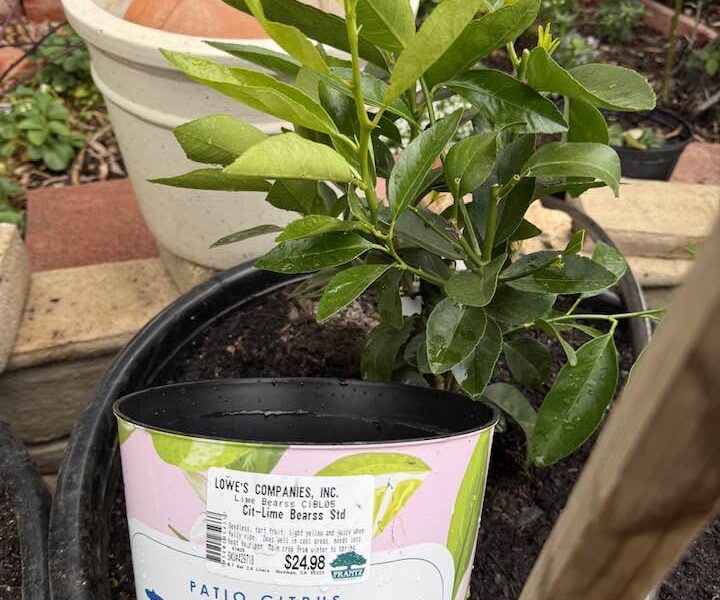
- Low Chill Hours: Needs only 100–200 chill hours, ideal for SoCal’s mild winters, ensuring reliable growth.
- Zesty Flavor: Offers a balanced, less acidic taste, perfect for culinary creativity and family enjoyment.
- Potted Versatility: Thrives in containers like our 25-gallon pot, ideal for urban spaces and movable for frost protection.
- High Yield Potential: Produces abundant limes as it matures, typically starting in 2–3 years, boosting your food forest.
- Heat Tolerance: Loves SoCal’s warm summers, requiring less water than traditional lawns.
The Bearss Lime, a recent addition to our Santa Clarita urban food forest, thrives in a 25-gallon pot, planted just 3–4 months ago and already showing promise with its glossy leaves and compact growth. This Persian lime variety, known for its large, seedless fruit and zesty flavor, is a perfect fit for Southern California backyards. While we await its first harvest in a few years, its vibrant potential and easy care make it an exciting cornerstone of our edible landscape.
What Makes the Bearss Lime Special?
The Bearss Lime dazzles with its juicy, seedless limes, prized for their tangy, slightly sweet flavor that elevates cocktails, desserts, and savory dishes. Though our young tree hasn’t fruited yet, its fragrant white blossoms and evergreen foliage add year-round beauty to our garden. Its nearly thornless branches make it family-friendly and easy to maintain.
Why It’s Perfect for SoCal Backyards
Growing Tips for Success
Plant your Bearss Lime in well-draining soil (mix with perlite or sand in pots) and place in full sun for at least 6–8 hours daily. Water deeply when the top 1–2 inches of soil are dry, reducing in winter to avoid root rot. Use organic mulch like compost or worm castings, as we do, to retain moisture and enrich soil. Prune in late winter to shape and enhance fruit production, and consider summer pruning to keep the tree smaller for compact spaces. Protect from rare frosts by moving the pot indoors or covering it. No pollinator is needed, but nearby citrus can boost yield.

